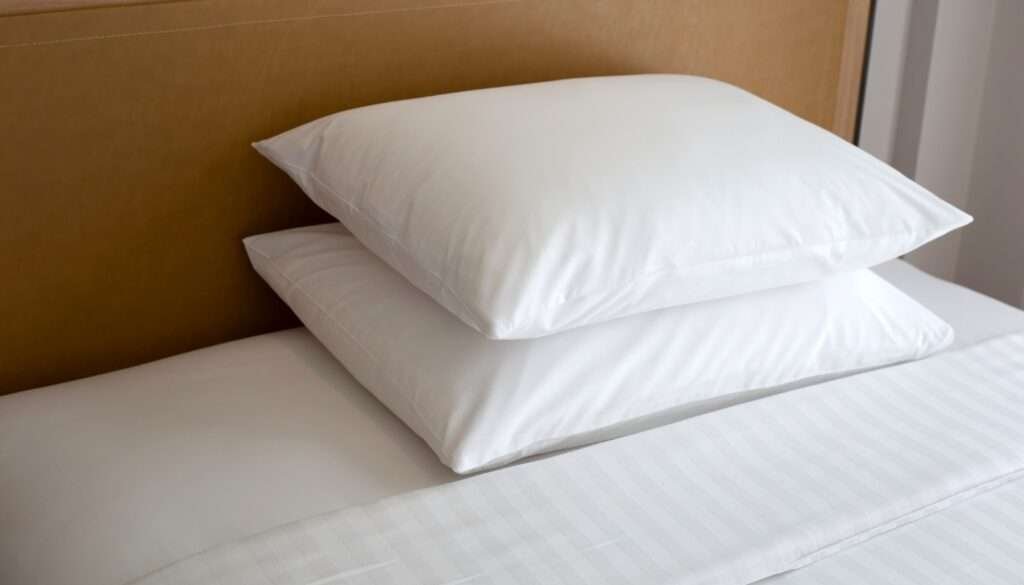Adding pillowcases, sometimes called pillow coverings, completes bedding ensembles in comfort and utility. They shield pillows from dust, grime, stains, and facial oils, giving them a cozy and appealing look. As individuals, we occasionally like nothing more than cuddling up with a soft cushion to help us unwind and feel secure as we wait for our senses to drift off to sleep.
There are numerous pillowcases to match various budgets and room needs because it stands to reason that something that doesn’t work for one person can work for someone another. But what distinguishes an Oxford pillowcase from a housewife’s pillowcase? Why does the cotton’s quality matter? Let’s explain.
A Housewife Pillow
There are housewife pillowcases in practically every household residence. Standard pillowcases tightly enclose the entire pillow to prevent creasing, drooping, and any attempts by the cushion inside to escape. Housewife covers are also very economical because they are the most common and generic pillowcases.
Bag Style Pillow
Pillowcases in the bag design are the least complicated and require minor maintenance, which is why the hotel industry adores them. The entry to a bag-style cover is open, with folded ends that can be tucked in to provide that essential neatness and finesse, as opposed to a typical housewife pillowcase with poppers, buttons, and an internal flap. For B&B owners and housekeepers for whom time is essential, bag-type cases are excellent since they provide simple access while changing a bed.
Mock Oxford Pillowcase
The most opulent and exquisite cover option is a mock Oxford pillowcase. Mock Oxfords, which include a stylish frill along their edge, are excellent for anyone looking to give their establishment’s bedrooms more impact. Although you could hardly tell the difference, fake Oxford pillowcases should be distinct from actual Oxford cases. A mock case’s border lacks mitered corners, whereas a traditional Oxford’s does.
How long can a pillowcase be used?
Your pillowcase should be changed every two to three days. It will assist in preventing the accumulation of sweat, oils, and grime on your pillow and keep it clean. You should change them more frequently if you have sensitive skin.
What kind of material works best for pillowcases?
There are a few common fabric choices when selecting a pillowcase. Cotton is renowned for being supple and breathable, frequently offering a luxurious feel for a reasonable cost. Polyester and microfiber are also reasonably priced and wrinkle-resistant. Choose silk or linen for a more opulent look and feel.
Clean pillowcases
Pillowcases should be taken off and cleaned separately from pillows. The direct contact between your skin and pillowcases causes them to yellow more quickly as they accumulate residue. Use liquid dish soap on the pillowcase and scrub it with a stiff brush to remove residue before cleaning it. A modest amount of vinegar can help with tough body oil and other stains. Throw the pillowcase in your washing machine on a hot cycle after cleaning it to remove any leftover residue and revive its freshness.
Wash pillows
Although pillows aren’t tough to clean, they need special care because of their distinctive construction. Check the pillow’s label for washing instructions; if you can’t find it, don’t panic; most synthetic and down pillows can be washed in the washing machine. Add hot/boiling water, dry laundry soap, and a tiny bit of bleach to the washing machine tub and let it sit for 30 minutes to boost the cleaning power of your washer and detergent. Afterwards, wash your pillow in the washing machine using a hot water setting and liquid detergent. Use a second rinse cycle to altogether remove the soap since pillows might trap it due to its composition.
Dry pillows
Although it is usually ok to dry pillows in the dryer, it’s best to use the air dry or lowest heat option. Throw in balled-up socks to fluff the pillows while they dry to prevent them from becoming lumpy while tumbling around in the dryer. Consider letting your pillows air dry for a few days to keep them fresh and to ensure that all moisture has been removed, preventing the growth of mold and mildew inside of them.
Maintaining quality
Clean your pillows a few times yearly to remove any accumulated dirt and stains and keep them fresh. Consider washing your pillowcases once a week and showering before bed to eliminate sweat, makeup, and other items. Pair your clean pillows and pillowcases with professionally cleaned and ironed bed linens for an enjoyable night’s sleep.
